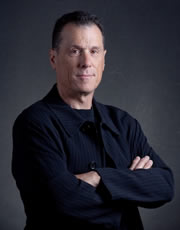
“What I never wanted in art — and why I probably didn’t belong in art — was that I never wanted viewers,” he said. “I wanted an interaction.”
Vito Acconci 1940-2017
Daily life seems overrun with interaction; the general forms of communication that track our movements and digital wanderings, our habits, and our tendencies. While art seems, at its core, to be somehow about visibility, the possibility of choosing invisibility, of disappearance, looms just at the horizon of an art practice. Is one showing enough, appearing in the requisite number of exhibitions, but not over-exposed? Does the artist have a career trajectory, a professional practice and/or a public persona? Such questions seem to be antagonistic though they are the questions that frame the way in which we seem to imagine ourselves as artists. What kinds of artists am I; a painter, a poet, a sculptor, a performer? Such designations also tend to denote our interactions with any sort of public. In historical moments when we find artists straying from material or disciplinary boundaries a different sort of community is forged. Often such communities coalesce around geography or ideology and artists then imagine themselves as a movement or collective with a singular focus. We historicize such groups as such; the identity of the individual subsumed by the aggregation. We index and we memorialize to remember and to create points of reference.
Perhaps I am also thinking about the ways that culture indexes and memorializes through various halls of fame (Rock and Roll, baseball, etc.) or the way in which we protect and insure longevity (cloud storage, archival paper and obituaries).
I recently chaired a conference that took as its shared theme from an essay written in 1966 by the critic Harold Rosenberg. The questions Rosenberg posed were still relevant and provocative on the page. How do we keep up with current questions about art, while not forgetting all those as yet unsettled, that remain in various archives and the digital ether? Of course, such questions are rhetorical; we gravitate to discussions or interactions (as Acconci preferred) based on our own desires and personal preference. Yet, I do wonder how our art students filter the overwhelming possibilities of contemporary life to find their own voices.
As I take “personal inventory” about life in general, about career, work, the balancing act of teaching, and other responsibilities, I am constantly trying to note the sweet spot where thinking and doing collide to produce the most desirable outcome. How much of each; more thinking, more doing, perhaps a sliding scale of each to insure thoughtful production of workflow?
This year the Art Department has undergone two major reviews. One an internal ten year review and the most recently completed NASAD accreditation review by an external panel. We have had to look deeply into our programs and stand up for how we do things and why we do them. It has been an enlightening process, which is sure to resonate for some time as we think about the questions that have been asked of us. It has been a year full of interactions, documentation and archiving, and one of real visibility as well, not so different than the critiques that our students stand for when they make their own work visible to us.
Douglas Rosenberg
